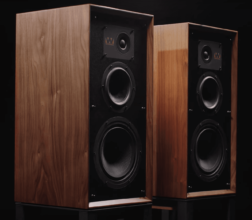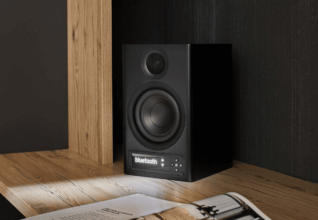Lyravox Karlos Monolith Review
This speaker stands confidently in the room. No wonder, as it is an improved version of the Karlos, which impressed us in 2019. Can the monolith with its artificial stone casing repeat that success? Alexander Rose-Fehling
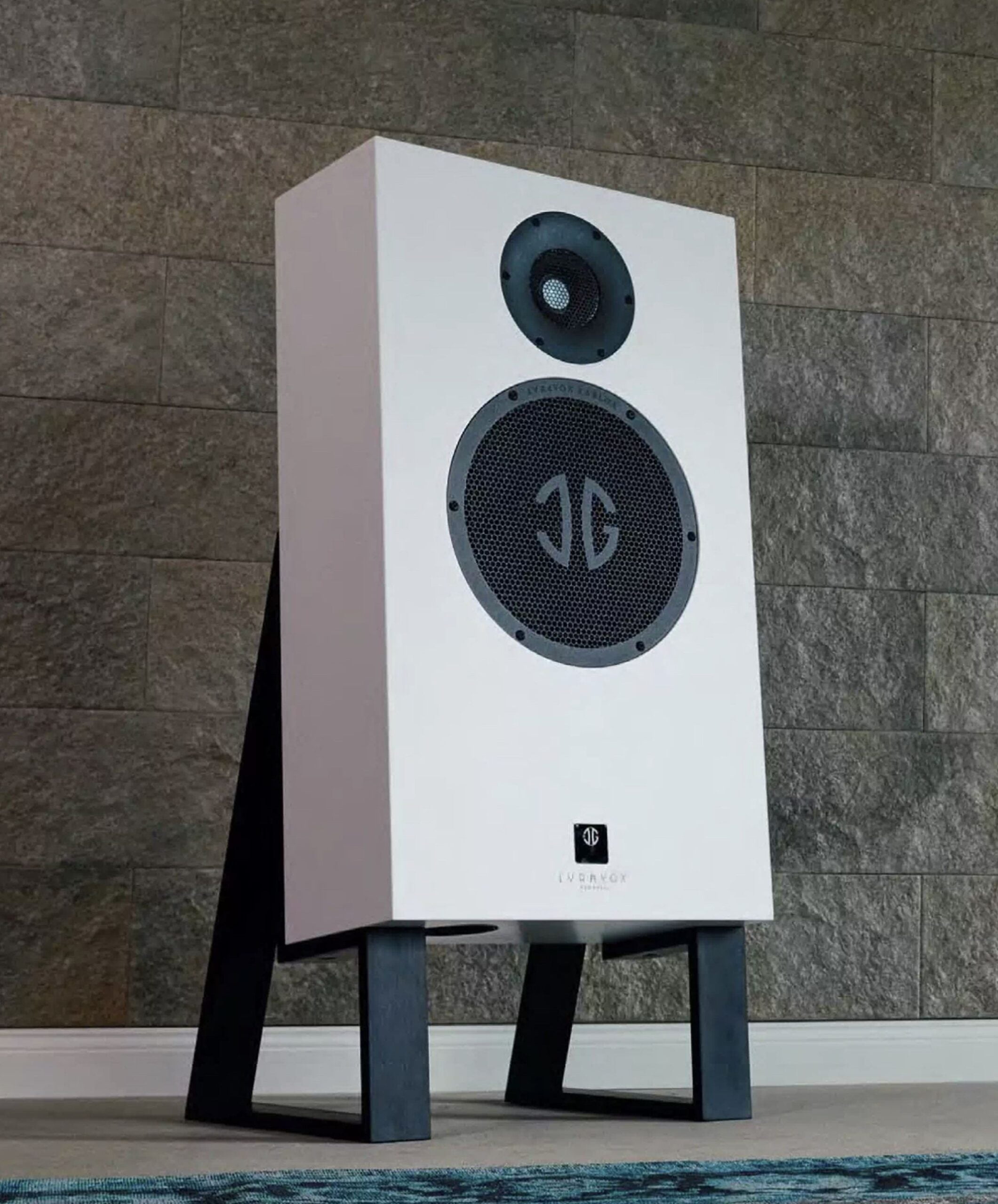
Lyravox’s ability to quickly respond to market demands is partly due to its small size and the effective teamwork of Dr. Götz von Laffert and Jens Wietschorke. The Hamburg-based manufacturer—where the term “manufactory” truly fits—removed built-in streamers from its active speakers at customers’ request a few years ago. Customers didn’t want to pay for a feature they already had in their system. This led to the creation of the Pure generation, with the saved production costs going into better chassis and components—a win-win situation.
Upgrades
Recently, changes were made again, this time at the developers’ behest. While there are improvements in the electronics and chassis, the most significant sound advancements come from the new housing. The importance of a good enclosure for clean, high-quality sound can’t be overstated. The fewer the resonances, the better. Hence, a “dead” material is advantageous.
For some time, the larger Karl model has featured an internal skeleton made of an acoustically optimized artificial stone called K-Material. The smallest Lyravox box, Karlsson, which was initially only available as a horizontal speaker and now also comes in a vertical version, also used K-Material.
Now, this upgrade has reached the compact Karlos stand box. K-Material is hard to set into vibration but also not easy to work with. No parts are screwed or glued together; instead, the artificial stone is chemically welded to itself. This creates a monolithic block, which gives these speakers their Monolith name. Due to the surface texture, the final manufacturing step skips painting. The enclosures are finely sanded or hand-polished on request, giving the boxes a marble-like shine. Color options are limited to white and a special black. The contact with the floor is made through ash legs with decoupling elastomer inserts.
Four Tweeters
As usual, each channel has two tweeters. Facing forward is the best available Accuton tweeter, the C30, the top model of the CELL series with a ceramic membrane, also found in the large Karl speaker. A waveguide provides more dynamics and an optimized directional pattern. Additionally, as before, there is an AMT on the top of the housing, radiating upwards to enhance the spatial impression (see measurement box). Lyravox calls this diffuse field expansion, meaning indirect sound comes into play. This concept is inspired by how musical instruments naturally radiate sound throughout a room rather than just forward. Unlike its predecessor, the AMT is now angled, forming a right angle with the dome tweeter. This setup provides the cleanest high-frequency impression at the listening position. Sound is projected forward centrally and slightly to the side at the back. This design brings the sound image closer to the listening position while slightly widening the soundstage compared to a straight setup.
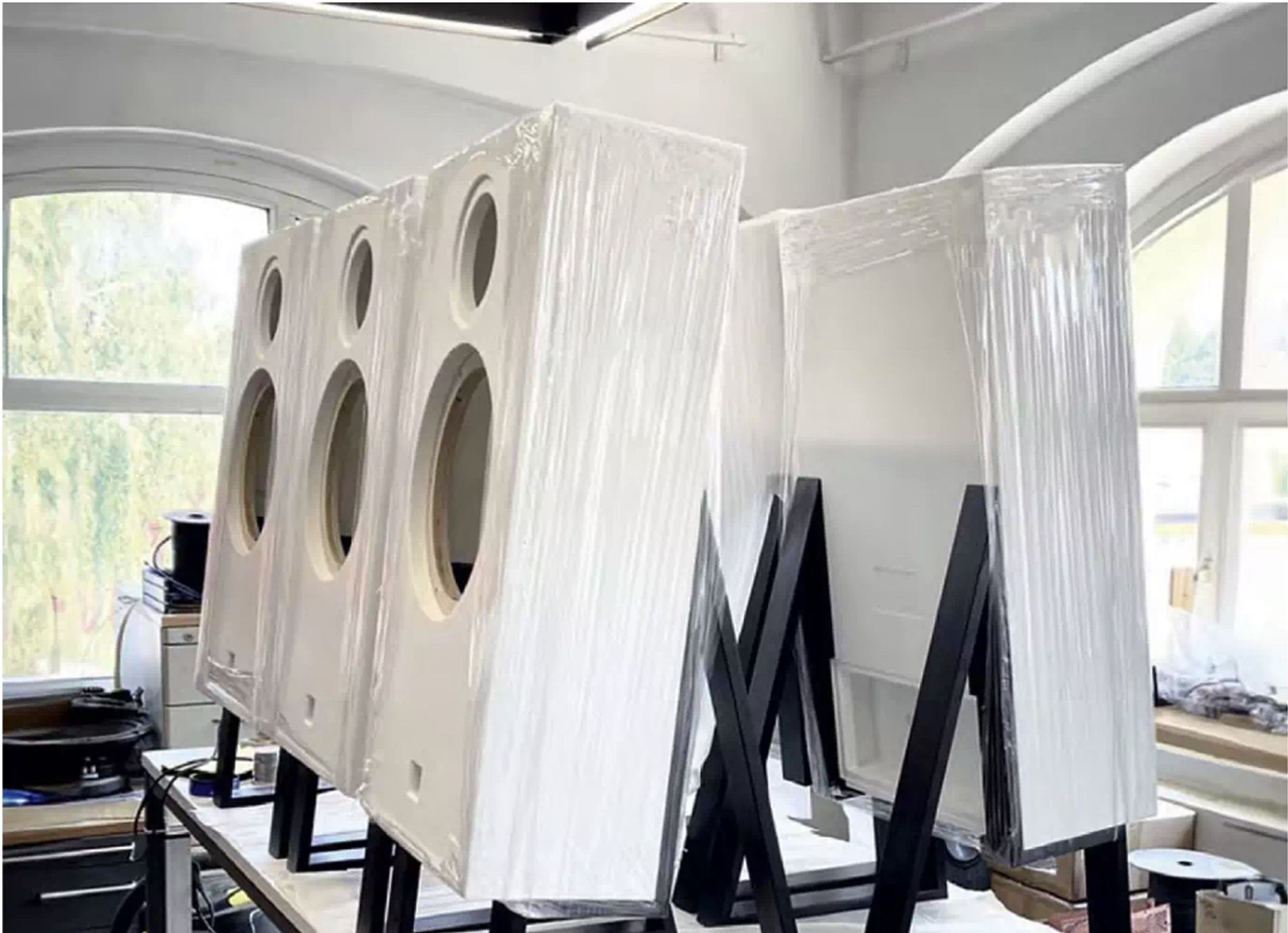
The AMTs on the enclosures are diffuse field expansions intended to enhance the spatial impression.
The low/midrange is handled by a 10-inch aluminum membrane from Scan Speak. Upon request from Lyravox, it is modified and equipped with damping elements to optimize resonance behavior. This was also the case with the predecessor, so the low/midrange driver remains unchanged. This means it is still quite a large model, made possible by the wide baffle. The bass reflex port is located at the bottom.
Power To The Chassis
For the Hypex NCore amplifiers that supply energy to the chassis, the Hamburg team delves into the premium drawer. While the fourth-generation amplifiers are not superior to the old ones in terms of pure performance numbers, they do excel in sound quality and the sheer size of the power supply. The low/midrange and tweeter each have their own amplifiers that supply the chassis directly without the detour through a crossover, thanks to DSP. The signal processing is digital, which means that analog signals are also converted to digital. The DSP then handles the frequency transitions, phase alignment, and time delay optimization.
If desired, you can connect a preamp to Karlos Monolith. However, you can also forgo a preamp and connect up to five sources directly to Karlos. The master unit’s connection panel includes three digital and two analog (Cinch and XLR) inputs. The analog inputs are also available on the slave box. If using a master-slave configuration, simply connect Box A and Box B with the included digital cable (Interlink). The integrated preamp is remote-controlled and, if desired, offers three sound presets after calibration by Lyravox. For example, you could choose a preset for film sound with a virtual center if Karlos is also to play TV sound. Speaking of home theater: Karlos is recommended for rooms between 12 and 40 square meters (with a ceiling height of up to 2.8 meters). The Hamburg team recommends a listening distance of two to five meters. In terms of wall distance, the box is also flexible, working well from 0.5 meters away, and after calibration, even 15 centimeters is sufficient. Especially under less than ideal acoustic conditions, the room calibration offered by Lyravox is worthwhile. It costs 1200 euros and, in our experience, is absolutely worth the money – and can take an entire day.
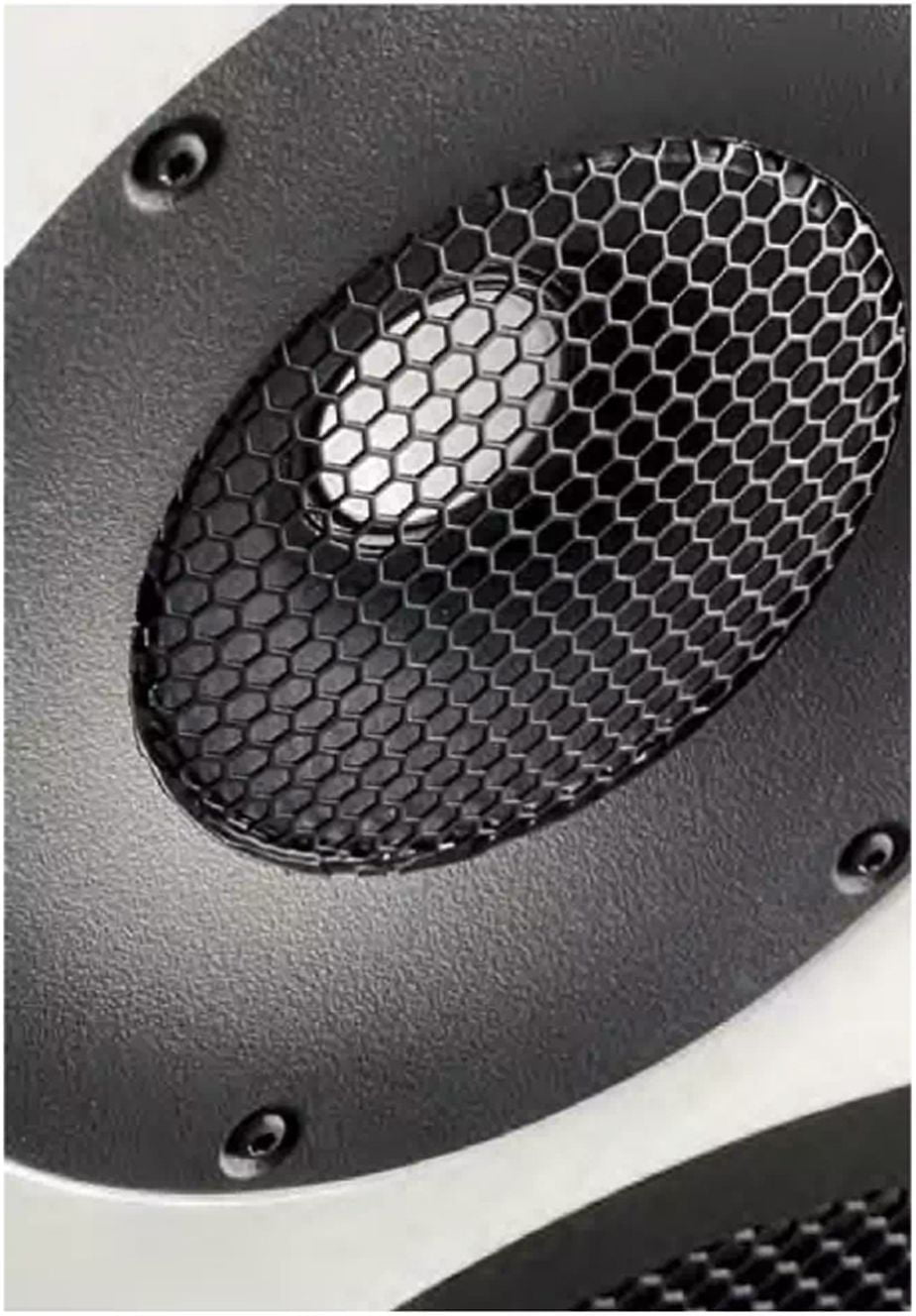
At this point, let me share a common truth: like all speakers, Karlos performs most freely and effortlessly when the room doesn’t absorb too much energy. Therefore, it faced some challenges in our listening room, similar to other speakers.
Listening Test
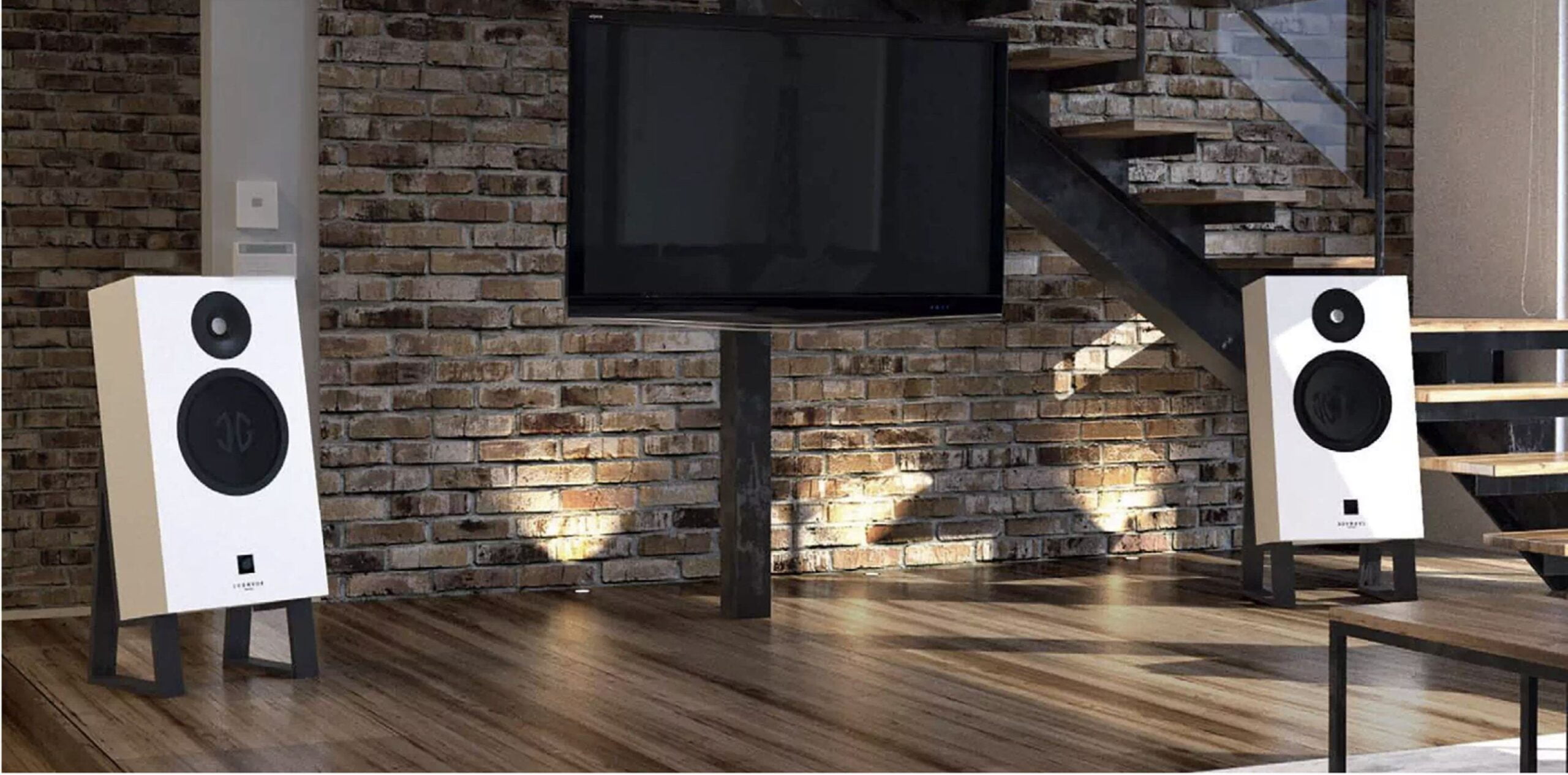
David Bowie’s “Low” is a rather challenging album that I rarely play. I only listen to it when a system meets certain criteria: enhanced resolution, clarity, and pleasant analysis – often found in active speakers. While this doesn’t make the songs any less strangely truncated, “Sound and Vision” can sound expansive, clear, and lively enough to make that secondary.
With this first track, it’s immediately noticeable that Karlos deceives the listener by creating a much taller soundstage than one might expect given its height. The angling and diffuse field tweeters play a major role in this.

Alice Cooper’s “Luney Tune” from the album “School’s Out,” in its latest 2022 remaster (Rhino), is quite impressive. Through Karlos, Cooper’s voice stood wonderfully free in a deep space, perfectly localized on the wide stereo stage. The bass swung and bounced, and the midrange and highs, particularly the guitars, sounded authentic and not at all tame, without hurting even at high volumes. With “Blue Turk,” there was a wonderful demonstration of the ease that Lyravox speakers can achieve.
Of course, the speaker was calibrated in our listening room. The adjustments to the frequency response were moderate. With the push of a button on the remote, we could switch between calibrated and factory sound. It was clear that the calibrated bass was leaner and more transparent, a significant advantage. The spatial imaging was also noticeably better when calibrated, proving once again that this is not unnecessary fluff but crucial for optimal sound. Finally, we indulged in the wonderful and unique voice of Natalie Merchant. Her solo debut “Tigerlily” sounded beautifully natural and balanced, though unpolished at high volumes. Timing and spatial imaging, likely Karlos’ two standout disciplines, were always close to perfection.
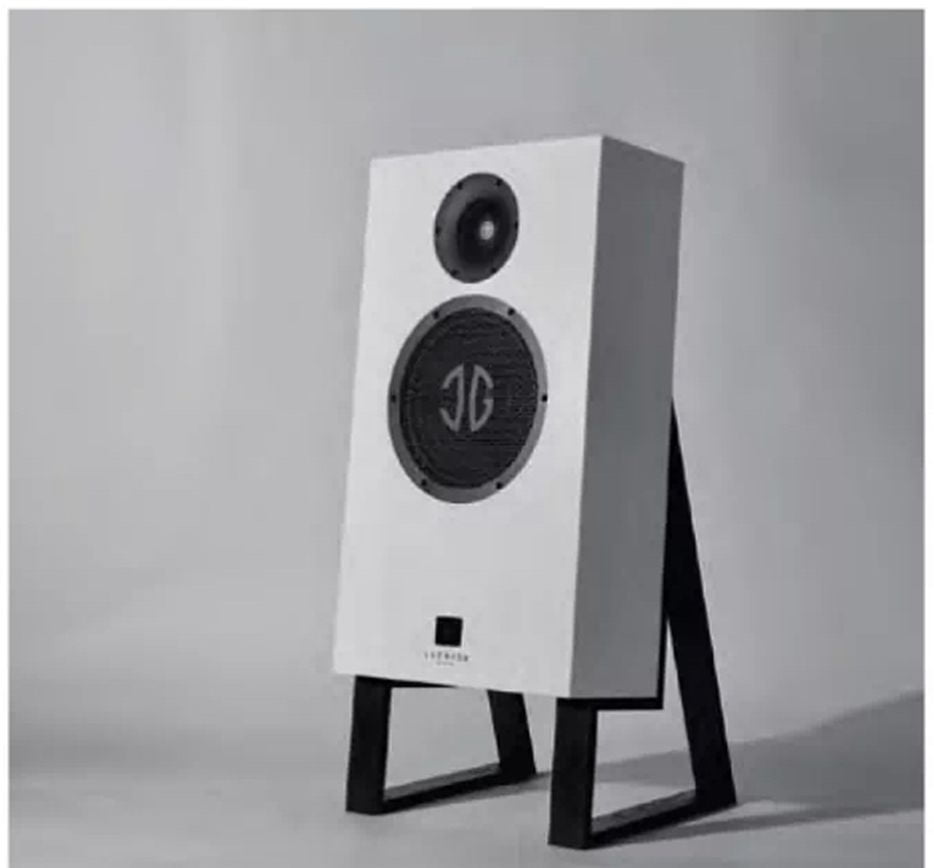
Specs
Distributor: Lyravox Gerätemanufaktur
Website: lvravox.com
List Price: 19,900 Euros
Warranty: 3 years for electronics, 5 years for mechanics
Dimensions (W x H x D): 40 x 87.5 x 37 cm
Weight: 38 kg
Finish: Veneer/Foil/Lacquer
Colors: White, Black on request
Operating Principles: 2-way bass reflex with diffuse field
Room Calibration: Available for an extra 1200 Euros
Special Features: Housing made of artificial stone
PROS & CONS
+ Natural sound with perfect timing and spatial imaging
+ Excellent craftsmanship
+ Room calibration available
– High price
– Could be slightly more lively in the high frequencies
TEST RESULTS
Neutrality: 17
Resolution: 18
Imaging: 20
Dynamics: 17
Bass: 18
Sound Rating (max. 100): 90
Lab Analysis (max. 50): 39
Product Quality (max. 50): 44
AUDIO BENCHMARK
Overall Score: 173 points
Price/Performance: Very good
Performance Report
In its default state (without calibration), the bass and lower midrange are emphasized (around 5 dB). Above 300 Hz, the frequency response gradually falls towards the highs. The sound contributions of the super tweeter, which radiates diagonally backwards, are not captured in the anechoic chamber measurement. Early but even directivity (no noticeable dips or peaks). Quite good deep bass (37/31 Hz -3/-6 dB). Very low distortion in the mid and high frequencies. Maximum bass level is 102 dB SPL. The waterfall plot shows resonances from the mid-woofer. Power consumption in standby/operation is 1.0/16 W (per speaker).
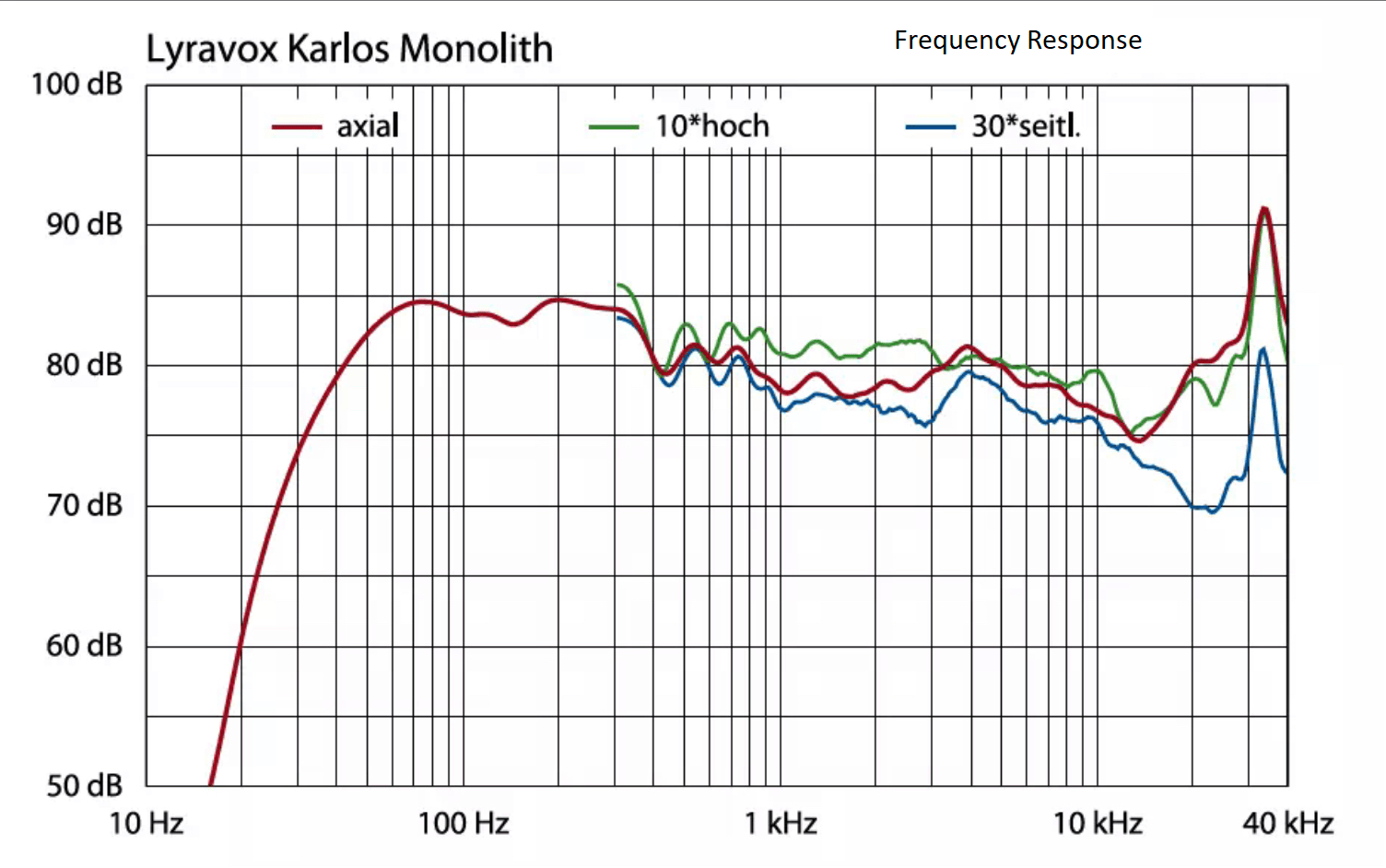
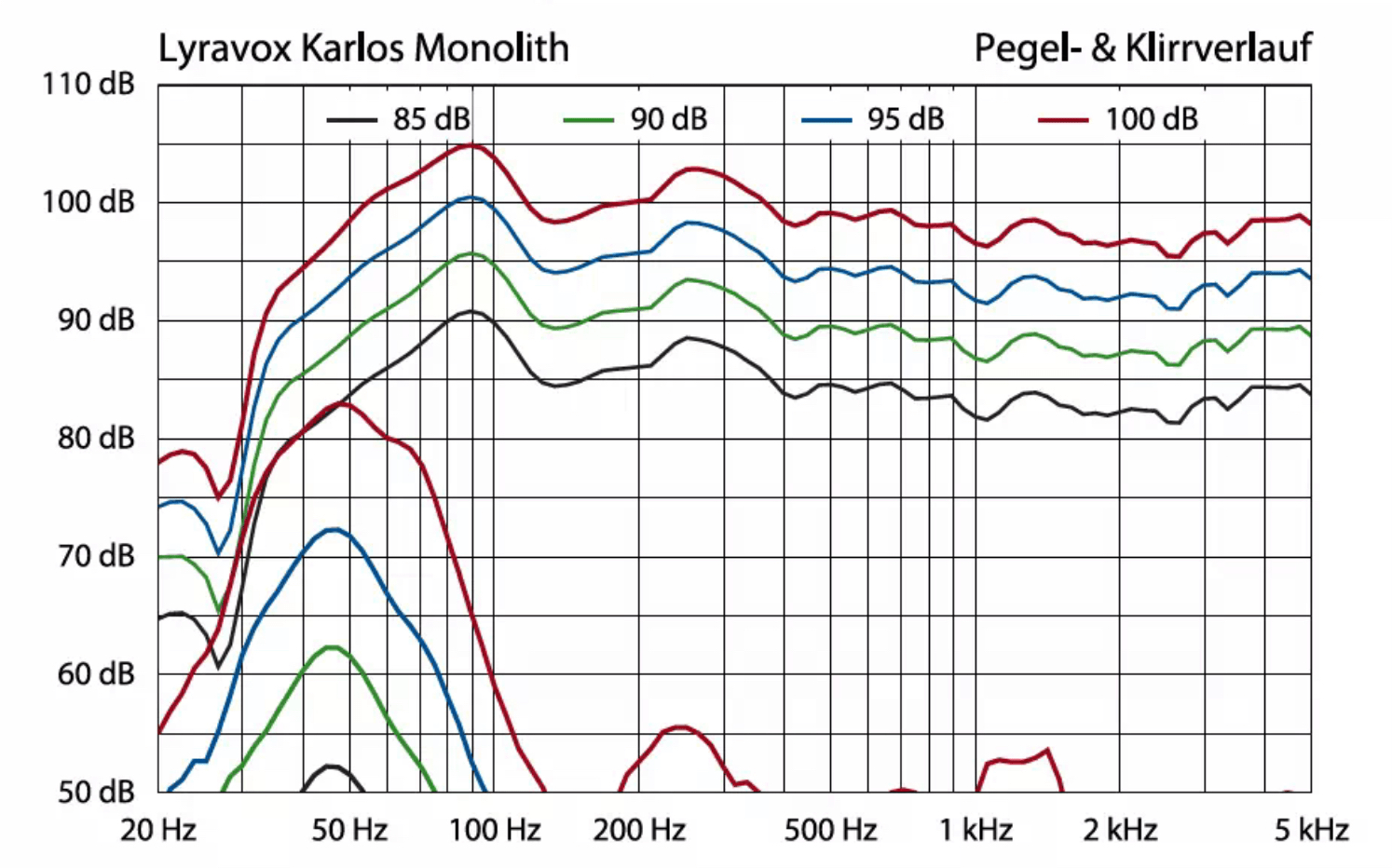
Verdict
A speaker for a long high-end life. Those who treat themselves to the (ideally) calibrated Karlos can essentially check off the topic of music reproduction. This technically sophisticated, DSP-controlled, musically convincing active speaker with a built-in preamp is a dream not only for the eyes but also for the ears.





